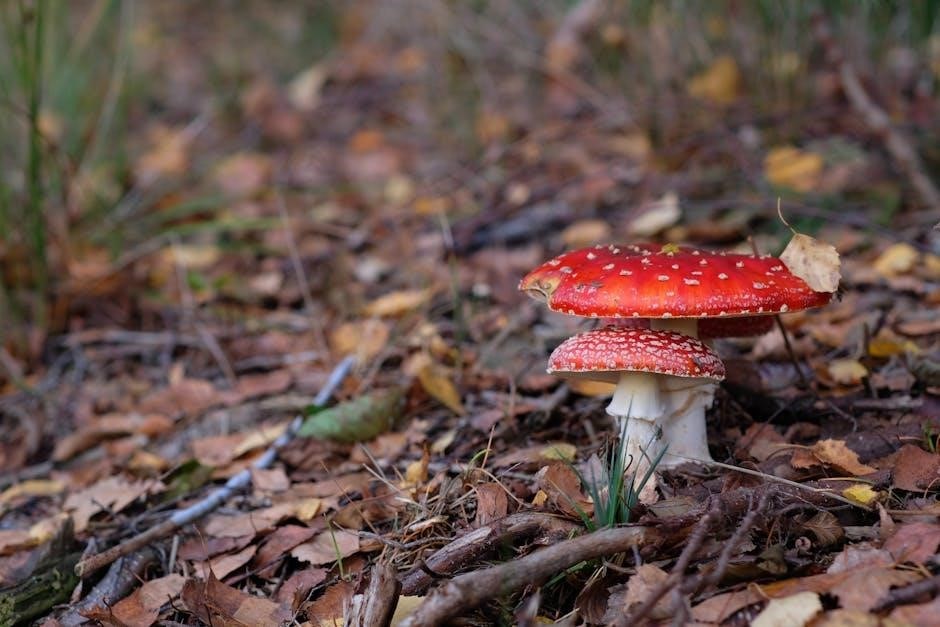Certain human foods, though harmless to humans, can be toxic to dogs. Awareness is key to preventing accidental poisoning and ensuring canine health and safety.
1.1. Why Some Human Foods Are Toxic to Dogs
Human foods can be toxic to dogs due to metabolic differences and the presence of harmful compounds. Dogs metabolize substances differently, making certain ingredients, like chocolate’s theobromine or grapes’ unknown toxins, dangerous. Even small amounts can trigger severe reactions, including vomiting, organ failure, or death. Foods containing thiosulphates, such as onions and garlic, damage red blood cells, while xylitol causes rapid blood sugar drops. These risks highlight why understanding food toxicity is crucial for dog owners to prevent accidental poisoning and ensure their pets’ safety and well-being.
1.2. Importance of Awareness for Dog Owners
Awareness of toxic foods is crucial for dog owners to prevent accidental poisoning and ensure their pets’ safety. Many common household items, such as chocolate, grapes, onions, and xylitol, can be deadly to dogs. Educating oneself about these risks helps in keeping toxic substances out of reach and making informed decisions about treats. Understanding the dangers also prepares owners to act quickly in emergencies, potentially saving their dog’s life. Vigilance and knowledge are key to safeguarding canine health and avoiding costly veterinary interventions.

Common Poisonous Foods for Dogs
Dogs can be poisoned by various human foods, including chocolate, grapes, onions, garlic, macadamia nuts, xylitol, avocado, yeast dough, caffeine, alcohol, mushrooms, and walnuts. Awareness is crucial.
2.1. Chocolate and Its Toxic Compounds
Chocolate is one of the most common and dangerous human foods for dogs due to its theobromine content. The darker the chocolate, the higher the toxicity. Theobromine, a methylxanthine, can cause vomiting, diarrhea, rapid heart rate, and hyperactivity in dogs. In severe cases, it may lead to seizures, heart failure, or even death. The toxicity varies depending on the type of chocolate and the amount consumed. Immediate veterinary attention is crucial if a dog ingests chocolate, as prompt treatment can prevent severe complications and ensure recovery.

2.2. Grapes and Raisins: Unknown Toxins
Grapes and raisins are highly toxic to dogs, though the exact compound causing harm remains unknown. Even small amounts can lead to severe health complications, including vomiting, diarrhea, lethargy, and kidney failure. The severity of symptoms varies, but all cases require immediate veterinary attention. Both fresh grapes and dried raisins pose equal risks, making them dangerous treats for dogs. Owners should strictly avoid sharing grapes or raisins, as their toxicity can lead to life-threatening conditions if not addressed promptly by a professional.
2.3. Onions and Garlic: Thiosulphate Danger
Onions and garlic contain thiosulphate, a compound toxic to dogs. Both raw and cooked forms are hazardous, with onions being more dangerous than garlic. Even small amounts can damage a dog’s red blood cells, leading to anemia. Symptoms include vomiting, diarrhea, lethargy, and breathing difficulties. Cooking or processing does not reduce toxicity, making it essential for owners to avoid feeding these foods altogether. Early veterinary intervention is crucial if ingestion occurs, as prolonged exposure can cause severe health complications.
2.4. Macadamia Nuts: Gastrointestinal and Neurological Issues
Macadamia nuts are highly toxic to dogs, causing gastrointestinal and neurological symptoms. Ingestion can lead to weakness, depression, vomiting, tremors, and hyperthermia. Symptoms typically appear within 3-12 hours and may resolve within 24-48 hours. The exact toxin in macadamia nuts is unknown, but even small amounts can cause significant distress. While most dogs recover with supportive care, severe cases may require veterinary intervention. It is crucial to keep macadamia nuts out of reach to prevent accidental ingestion and potential health complications for your dog.
2.5. Xylitol: The Deadly Artificial Sweetener
Xylitol, a common artificial sweetener in sugar-free products, is highly toxic to dogs. It causes a rapid insulin surge, leading to severe hypoglycemia, and can result in liver failure. Symptoms include vomiting, seizures, and lethargy, often within 15-30 minutes of ingestion. Even small amounts, such as those found in gum or candy, can be deadly. Xylitol is also present in some peanut butters and baked goods, making it essential for dog owners to carefully check labels and keep these items out of reach to prevent accidental poisoning and potentially fatal outcomes.
2.6. Avocado: Persin and Fat Content Risks
Avocados contain persin, a toxic compound that can cause vomiting, diarrhea, and lethargy in dogs. While the exact toxicity varies, the pit, skin, and leaves are particularly hazardous. Additionally, avocados are high in fat, which can lead to pancreatitis, a painful and potentially life-threatening condition. Symptoms may develop gradually, and severe cases require immediate veterinary care; Dog owners should avoid feeding avocado entirely to prevent these risks and ensure their pets remain safe from its harmful effects.
Why These Foods Are Poisonous
Human foods can be toxic to dogs due to metabolic differences and the presence of harmful substances that negatively affect canine physiology.
3.1. Metabolic Differences Between Humans and Dogs
Dogs metabolize food differently than humans, making certain substances toxic. For example, theobromine in chocolate is harmless to humans but toxic to dogs due to slower metabolism. Similarly, compounds in grapes and onions disrupt canine physiology uniquely. Dogs also lack enzymes to process specific human foods, leading to toxic buildup. Their smaller body size means even small amounts can be dangerous. These metabolic differences highlight why foods safe for humans can be deadly for dogs, emphasizing the need for careful dietary management.
3.2. Toxic Substances and Their Effects on Canine Physiology
Toxic substances in certain foods disrupt canine physiology in unique ways. For instance, theobromine in chocolate affects dogs’ hearts and nervous systems due to their sensitivity. Persin in avocados can cause respiratory distress, while thiosulphate in onions damages red blood cells. Grapes contain unknown toxins that impair kidney function. These substances trigger vomiting, seizures, or organ failure, highlighting the importance of understanding their effects to prevent poisoning and guide urgent veterinary care when exposure occurs.

Symptoms of Food Poisoning in Dogs
Symptoms of food poisoning in dogs include vomiting, diarrhea, lethargy, and loss of appetite. Severe cases may lead to seizures or difficulty breathing, requiring immediate veterinary care.
4.1. Immediate Signs of Toxicity
Immediate signs of toxicity in dogs may include vomiting, diarrhea, excessive drooling, and lethargy. In severe cases, tremors, seizures, or difficulty breathing can occur. These symptoms often appear within hours of ingestion and indicate the need for urgent veterinary care. Recognizing these signs early is crucial, as prompt treatment can significantly improve outcomes. Always monitor your dog’s behavior after consuming unknown substances and seek professional help if any concerning symptoms arise.
4.2. Delayed Symptoms and Long-Term Effects
Some symptoms of food poisoning in dogs may not appear immediately, developing hours or even days after ingestion. These can include prolonged vomiting, abdominal pain, or lethargy. In severe cases, delayed symptoms may progress to organ failure, such as liver or kidney damage, depending on the toxin consumed. Long-term effects could involve chronic health issues or permanent damage if treatment is delayed. Recognizing these signs is critical, as timely veterinary intervention can prevent irreversible harm and improve recovery outcomes for affected dogs.

Preventing Food Poisoning in Dogs
Preventing food poisoning in dogs requires awareness of toxic foods and secure storage. Feeding safe human foods and educating family can ensure canine safety and health.
5.1. Safe Human Foods for Dogs
While many human foods are toxic to dogs, some are safe in moderation. Apples, carrots, and green beans are healthy treats. Plain, unseasoned chicken or turkey can be added to meals. Always remove seeds and pits, as they can be harmful. Small amounts of plain yogurt or peanut butter (without xylitol) are also safe. However, consult your vet before introducing new foods to ensure they align with your dog’s dietary needs and avoid allergies or digestive issues.
5.2. Tips for Keeping Toxic Foods Out of Reach
To protect your dog from toxic foods, store all hazardous items in secure, elevated locations. Use child-proof containers or cabinets to prevent access. Educate family members and guests about dangerous foods like chocolate, grapes, and onions. Avoid leaving food unattended, especially during holidays or celebrations. Dispose of trash securely, as dogs may rummage through garbage. Always read food labels to identify harmful ingredients like xylitol. By maintaining a safe environment, you can significantly reduce the risk of accidental poisoning and keep your dog healthy and safe.
Emergency Response and Treatment

If your dog ingests something toxic, remain calm and contact your veterinarian or pet poison control immediately. Acting quickly can prevent severe health complications and ensure the best outcome for your pet.
6.1. What to Do If Your Dog Eats Something Toxic
If your dog ingests something toxic, stay calm but act quickly. Contact your veterinarian or a pet poison hotline, such as the ASPCA (888-426-4435) or Pet Poison Helpline (800-213-6680), for immediate guidance. Do not induce vomiting unless instructed by a professional. Gather any packaging or remains of the ingested item for identification. Time is critical, so seek veterinary care without delay to prevent severe health complications.
6.2. Contacting Veterinary Help and Poison Control
If your dog ingests something toxic, contact your veterinarian or a pet poison hotline immediately. The ASPCA Animal Poison Control Center (888-426-4435) and the Pet Poison Helpline (800-213-6680) provide 24/7 assistance. Be prepared to provide details about the substance, amount consumed, and your dog’s weight. Follow their advice closely, as prompt action can prevent severe harm. Delaying contact can worsen outcomes, so act swiftly to ensure your dog receives the necessary care.

Special Considerations for Holidays and Celebrations
Holidays like Thanksgiving and Christmas often involve foods toxic to dogs, such as chocolate, grapes, and nuts. Keep festive treats out of reach to ensure safety.
7.1. Thanksgiving and Christmas Foods to Avoid
During Thanksgiving and Christmas, certain festive foods pose significant risks to dogs. Chocolate, grapes, raisins, and nuts like macadamia nuts are highly toxic and should be kept out of reach. Onions, garlic, and dishes containing these ingredients can also cause severe health issues. Cooked bones, especially turkey bones, can splinter and harm your dog’s digestive system. Alcohol and foods sweetened with xylitol, such as desserts, are equally dangerous. Avocado, while not as toxic, can still cause gastrointestinal distress. Always prioritize your dog’s safety by sticking to pet-safe treats and consulting reliable sources like the American Kennel Club for guidance.
7.2. Keeping Your Dog Safe During Festive Meals
Festive meals can pose risks to dogs due to toxic foods and tempting treats. To keep your dog safe, ensure all food is securely stored and out of reach. Use pet-safe treats or toys to distract them from the feast. Monitor your dog closely to prevent sneaking bites. Secure trash cans containing leftovers, as they can attract curious pets. Inform guests about toxic foods and ask them to refrain from feeding your dog. Always have emergency contact numbers, like the ASPCA Poison Control, handy in case of accidental ingestion. A little vigilance ensures a joyful and safe celebration for your furry friend.
Resources for Dog Owners
Downloadable PDF guides, like “Foods Dangerous for Dogs,” and websites such as Vets Now provide essential lists of toxic foods. Helplines like ASPCA Poison Control offer immediate assistance for worried pet owners, ensuring quick access to critical information and advice during emergencies involving poisonous foods.
8.1. Printable PDF Guides on Toxic Foods
Printable PDF guides, such as “Foods Dangerous for Dogs” and resources from organizations like Battersea Dogs, provide comprehensive lists of toxic foods. These guides highlight harmful ingredients, including chocolate, onions, grapes, and xylitol, and offer clear warnings about their dangers. They often include visual charts and checklists, making it easy for dog owners to identify and avoid hazardous foods. Many guides are available for free download from veterinary websites and animal welfare organizations, serving as essential tools for pet safety and emergency preparedness.
8.2. Reliable Websites and Veterinary Recommendations
Reputable websites like the American Kennel Club, Vets Now, and the ASPCA provide detailed lists of toxic foods for dogs. These sites offer accurate information on foods to avoid, such as chocolate, grapes, and xylitol, and include emergency contact details. Veterinary recommendations emphasize the importance of consulting trusted sources to ensure pet safety. Many sites also feature downloadable PDF guides and infographics to help dog owners quickly identify hazardous foods and take appropriate actions to protect their pets.
